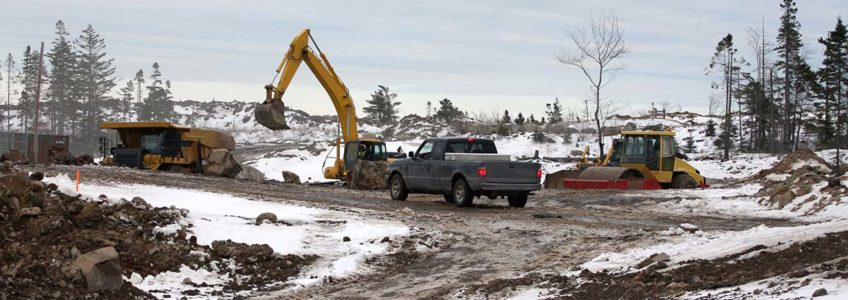
As the economy surges back after a long period of uncertainty, it seems as though last winter was just yesterday, but here we are once again. As the mercury drops and the ground gets harder, the weather shift means everything from preparing equipment for colder weather to shuffling our workday schedule to donning more protective gear to be highly visible on commercial job sites and stay warmer and less exposed to the elements while outdoors.
Here is our checklist for crews as we prepare for the cold months of winter:
- Prepare the equipment – We run everything from trucks to forklifts, compressors and pneumatic tools, to electric and gas power tools in our yard and on customer job sites. Preparing for colder months on our equipment means testing batteries for amps and volts, checking fluids; ensuring we have proper viscosity for cold weather, or anti-seize/anti-freeze in critical cooling systems. Testing the pressure in air-filled tires as the colder, denser air means can often cause pressure to decrease, and for pick-ups it may be adding sand bags to the bed to increase traction.
- Make snow & ice removal equipment accessible – Snow blowers, shovels, front blades for trucks, and salt are all critical to maintaining the yard during winter. For your job site this may be as simple as having a shovel on hand to ensure access to entryways, towels and floor mats inside as workers move between outdoors and indoors, and possibly having a few extra tarps on hand for material or tools stored outside as inclement weather looms.
- Ensure workers are properly equipped – It may be a company policy to wear a company shirt or vest, consider buying company Carhartt jackets with your logo embroidered on them. It’s a small price to pay to keep your crews warm when outside. Also, thin, warm, windproof gloves and face coverings will do wonders to protect exposed skin during the coldest part of the year.
- Educate and plan breaks on colder days – Educate your staff on signs of frostbite and hypothermia. Schedule periodic breaks for outside workers on colder days where they can move indoors or get some hot coffee inside a truck out of the elements.
- Be aware of weather forecasts – Some days it may be too challenging to work outdoors due to extreme cold, high winds, or excessive snow. Plan indoor work if possible, or cancel work ahead of time when there’s a high probability of risky weather.
Ultimately, job site safety in the winter is all about awareness and preparedness. Whether you’re a veteran or a first-year contractor in a snowbelt state, we hope these tips are a great reminder to plan appropriately for the winter months. If you have new projects beginning in the fall or winter, remember; we can install temporary construction fence and silt fence in winter. Please request a quote by phone or online today!






